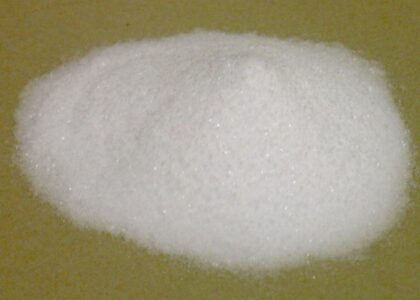
The global lactose free probiotic yogurt market is forecasted to be appraised at US$ 25.05 billion by 2032, up from US$ 13.6 billion in 2022, advancing at a CAGR of 6.3% during the forecast period.
Lactose free probiotic yogurt is made without milk’s sugar lactose, and the market includes cheese, yogurt, desserts, and ice creams that are comprised of very less or no lactose content. These products offer nutritional advantages, and the market demand for lactose free probiotic yogurt is likely to get spiked by its rising use by consumers.
Lactose Free Probiotic Yogurt Market- Notable Highlights
Some of the leading players in the lactose free probiotic yogurt market are Dean Foods, Nestle, Arla Foods, The Danone Company Inc., Green Valley Organics, Kerry Group, Crowley Foods, Shamrock Foods Company, McNeil Nutritionals, Doves Farm Foods, Galaxy Nutritional Foods, Cargill, Daiya Foods, and Edlong Dairy Technologies.
- Danone North America has opened new facility to increase production of its plant-based food products. The facility is likely to produce Vega yogurt alternatives and nutritional powder, along with Silk yogurt alternatives.
- Nongfu Spring has launched vegan yogurt product in China. This product is the first mainstream plant-based yogurt in the country.
- Oatly, a Swedish vegan brand has introduced a drinkable yogurt made using fermented oats. The new product known as Oatgurt will be provided in four flavors including strawberry, vanilla, lemon elderflower, and natural.
Request Sample Report and Drive Impactful Decisions@ https://www.futuremarketinsights.com/reports/sample/rep-gb-9454
Lactose Free Probiotic Yogurt Market Dynamics
Rising Levels of Lactose Intolerance Driving Lactose Free Probiotic Yogurt Market
Some ethnic groups across countries are more lactose intolerant than others. According to the National Institutes of Health, around 65% of the global population is lactose intolerance. This is driving the demand for lactose free food products including lactose free probiotic yogurt. In response to growing demand for lactose free yogurt and other dairy products, food producers are focusing on using vegan milks made from peanuts, hazelnuts, rice, coconuts to produce lactose free probiotic yogurt.
Manufacturers in lactose free probiotic yogurt market are using lactases, neutral lactases is mostly used for production of lactose-free dairy products. Moreover, starter culture of live bacteria is also added in lactose free yogurt to enhance the probiotic content. Although yogurt naturally contain various types of probiotics, some manufacturers are adding additional probiotics which may include Lactobacillus acidophilus as it helps in reducing lactose, making it easy to consume probiotic yogurt for people with lactose intolerance.
Coconut Milk Yogurt Gaining Popularity in Lactose Free Probiotic Yogurt Market
Coconut milk yogurt has emerged as one of the top dairy free and lactose free source of probiotics. While Greek yogurt contains less lactose as compared to traditional milk yogurt, majority of the people with lactose intolerance are avoiding these yogurt products while switching to vegan style and lactose free probiotic yogurt such as coconut milk based yogurt.
The probiotics in coconut milk yogurt offers probiotics that help to regulate digestive health by providing healthy gut bacteria. Manufacturers in lactose free probiotic yogurt market are combining coconut milk with flavorings, fruits, and active cultures in order to produce vegan yogurt with nutritional benefits. Consumers are also making their own coconut milk yogurt using canned coconut milk and powdered probiotics.
Soy, almond, and coconut are popular dairy-free yogurt bases. A few years back soy used to be popular base for dairy-free yogurt, however, food producers are providing consumers with new option, this has increased the popularity of coconut milk used as a base for yogurt.
Purchase this Premium Research Report | Immediate Delivery Available@ https://www.futuremarketinsights.com/checkout/9454
High Cost and Poor Taste to Challenge Growth in the Lactose Free Probiotic Yogurt Market
Driven by consumer perception of dairy-free products as healthier alternatives to dairy products along with the rise in vegan population, dairy-free products made using plant-based sources are gaining popularity. However, low on taste and high cost of dairy-free products including lactose free probiotic yogurt are emerging as the challenges.
Specialty products such as non-dairy cheese and lactose free probiotic yogurt are expansive as compared to lactose containing products. Owing to the complex resources and manufacturing process, the cost of lactose-free probiotic yogurt is high. Moreover, high price of alternate milk sources also adds to the cost of lactose-free probiotic yogurt. In terms of taste, dairy-free products such as lactose free probiotic yogurt often taste different than regular dairy products. However, food producers are focusing on the ingredients in these products in order to enhance the taste and texture of lactose-free dairy products.
The report on the lactose free probiotic yogurt market is a compilation of first-hand information, qualitative and quantitative assessment by industry analysts, inputs from industry experts and industry participants across the value chain of the global lactose free probiotic yogurt market.
The report provides an in-depth analysis of parent market trends, macroeconomic indicators and governing factors along with lactose free probiotic yogurt market attractiveness as per segments. The report also maps the qualitative impact of various factors on lactose free probiotic yogurt market segments and geographies.
Access the Complete Report Methodology Now@ https://www.futuremarketinsights.com/request-report-methodology/rep-gb-9454
Lactose Free Probiotic Yogurt Market Segmentation
Based on the distribution channel, the lactose free probiotic yogurt market is segmented into
- Hypermarket/supermarket
- Convenience stores
- Specialty stores
- E-retailers
Based on the nature, the lactose free probiotic yogurt market is segmented into
- Conventional
- Organic
About Future Market Insights (FMI)
Future Market Insights, Inc. (ESOMAR certified, recipient of the Stevie Award, and a member of the Greater New York Chamber of Commerce) offers profound insights into the driving factors that are boosting demand in the market. FMI stands as the leading global provider of market intelligence, advisory services, consulting, and events for the Packaging, Food and Beverage, Consumer Technology, Healthcare, Industrial, and Chemicals markets. With a vast team of over 400 analysts worldwide, FMI provides global, regional, and local expertise on diverse domains and industry trends across more than 110 countries.
Contact Us:
Nandini Singh Sawlani
Future Market Insights Inc.
Christiana Corporate, 200 Continental Drive,
Suite 401, Newark, Delaware – 19713, USA
T: +1-845-579-5705
For Sales Enquiries: sales@futuremarketinsights.com
Website: https://www.futuremarketinsights.com
LinkedIn| Twitter| Blogs | YouTube



